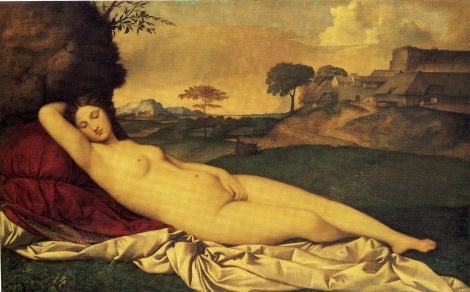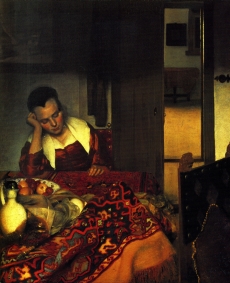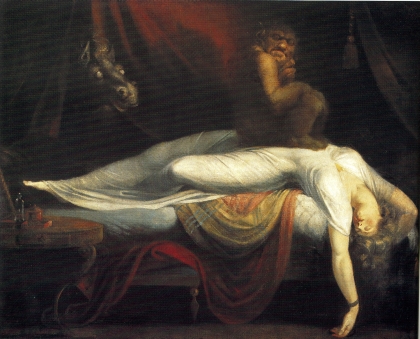Sleep
Sleep is a behavioural state characterised by the temporary suspension of the state of watchful consciousness. The particular subjective nature of sleep has always stimulated philosophical thought, but the actual behaviour of the sleeping organism has also attracted wide interest across all cultures.
From a human point of view, the
subjective state of consciousness linking us to our real surroundings disappears
when we sleep, while a state of consciousness known as
oneiric![]() appears when we dream.
The oneiric experience is not always remembered, or remembered only in part, when
we awake from sleep. From an objective point of view, a reduction in our reactions
to stimuli from our surroundings is a characteristic of a sleeping person.
appears when we dream.
The oneiric experience is not always remembered, or remembered only in part, when
we awake from sleep. From an objective point of view, a reduction in our reactions
to stimuli from our surroundings is a characteristic of a sleeping person.
It is especially worth remembering
that sleep was the subject of in-depth studies in the field of the figurative arts
well before scientific research into its mechanisms began. Just as the interaction
between graphic arts and anatomy proved to be very useful, so the works of painters
and sculptors depicting sleep over various periods of history have been equally
important. Some of these works of art show the different stages of sleep
(NREM![]() and REM
and REM![]() ),
which correspond perfectly to those identified by modern scientific research.
),
which correspond perfectly to those identified by modern scientific research.
|
Post-prandial nap |
|
|
|
|
NREM Sleep characterised by motory rest, reduced and regular circolatory and respiratory activity, oneiric activity |
 Fig. 2: Giorgione. "Sleeping Venus". (Credit: Staatliche Kunstsammlungen, Dresda) |
|
REM Sleep |

